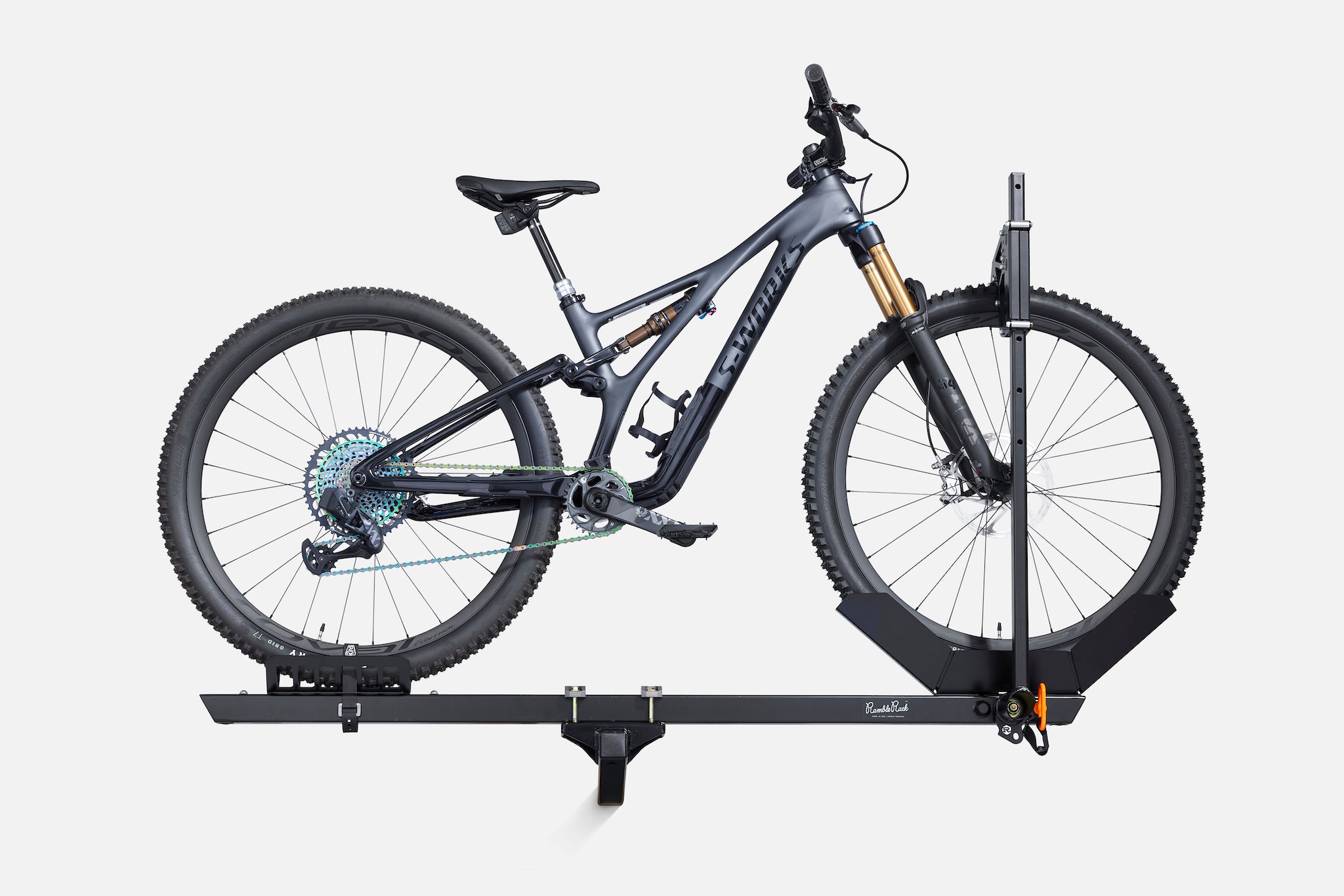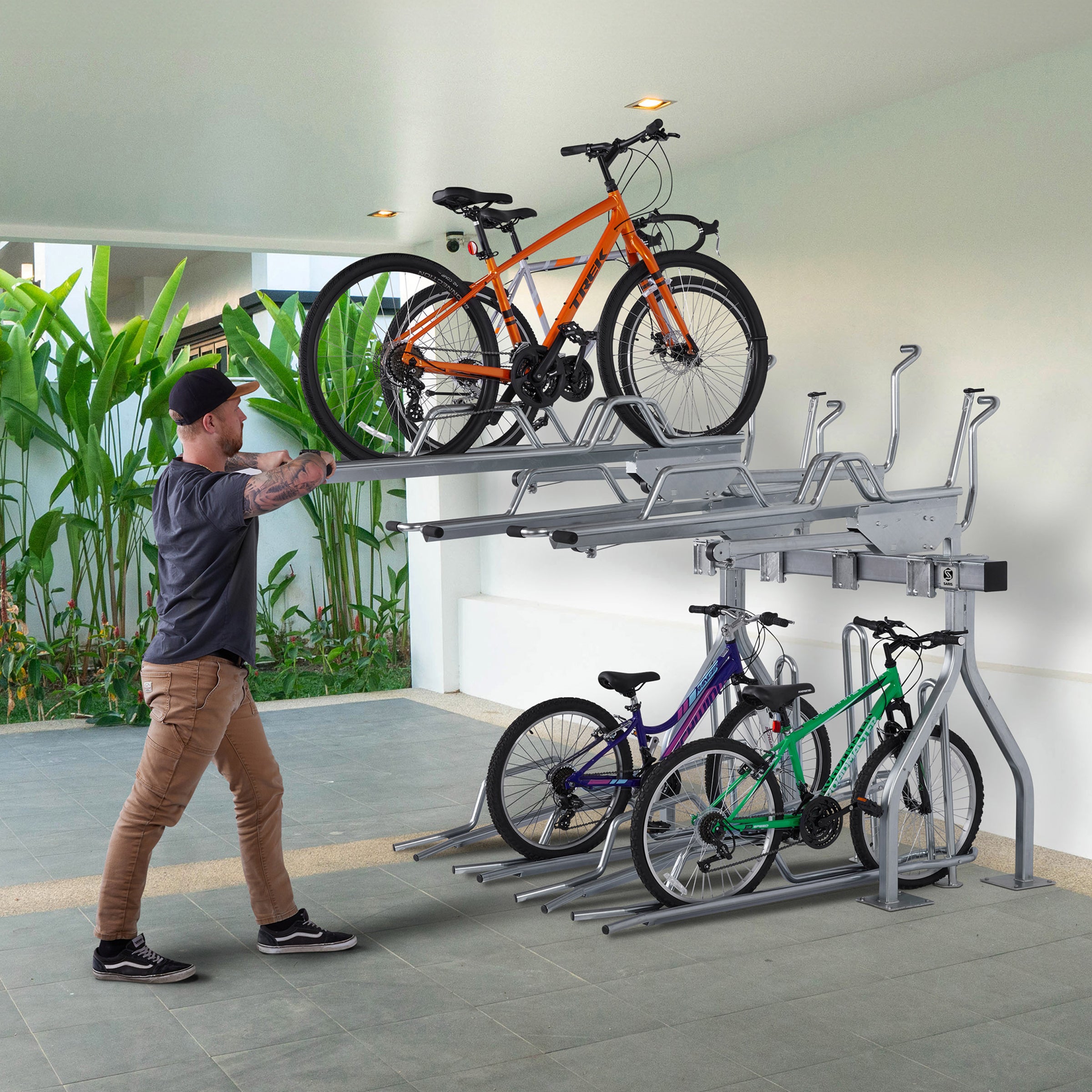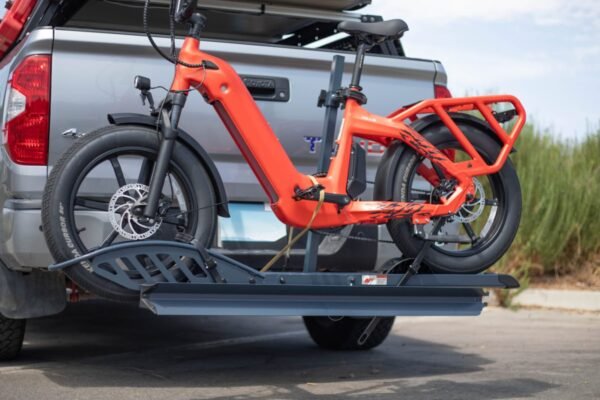The Ultimate Resource to Finding the Best Bike Rack for Los Angeles Riders
Discover the Various Kinds Of Bike Rack and Their Practical Applications for Biking Enthusiasts
The selection of bike Racks available today accommodates the varied demands of cycling lovers. From freestanding to wall-mounted options, each design uses unique benefits for storage and transport. Mobile Racks additionally offer adaptability for those on the move. Choosing the suitable type calls for careful consideration of specific needs. Recognizing these elements can make a significant difference in both comfort and security for cyclists. What are the crucial factors to consider when selecting a bike rack?
Understanding Bike Rack Keys In
Different sorts of bike Racks satisfy the diverse demands of bicyclists. Amongst one of the most usual are freestanding shelfs, typically found in urban areas, which permit numerous bikes to be safeguarded in a portable room. Wall-mounted Racks serve those with minimal floor space, providing an efficient option for home storage. Additionally, mobile bike shelfs, made for simplicity of transport, charm to bicyclists who often travel.

Hitch-Mounted Bike Racks
Hitch-mounted bike Racks offer a functional option for transferring bikes, however comprehending their installment process is important for efficient use. Individuals need to also take into consideration the weight ability of these Racks to ensure safety and stability while taking a trip. In addition, compatibility with various lorry kinds plays a significant role in determining the appropriate shelf for individual requirements.
Setup Refine Introduction
When choosing a hitch-mounted bike shelf, understanding the installment procedure is important for guaranteeing security and benefit. Initially, the individual has to confirm compatibility in between the car and the rack's drawback receiver. Many Racks are developed for either 2-inch or 1.25-inch receivers. After selecting the suitable rack, the setup starts with securing the shelf right into the drawback receiver and tightening the hitch pin or bolt to avoid activity. Proper positioning is important to determine the shelf does not block tail lights or permit plates. When installed, it is a good idea to examine for stability by using small pressure to the shelf. Complying with the maker's guidelines will certainly ensure a successful setup, advertising a safe cycling experience when driving.
Weight Ability Considerations

Compatibility With Car Types
Selecting the ideal bike shelf involves verifying compatibility with numerous automobile kinds. Hitch-mounted bike Racks are developed to affix to the rear hitch receiver of an automobile, making them appropriate for a vast array of vehicles, cars, and suvs. It is crucial to inspect the hitch class and weight ability to validate an appropriate fit. Many hitch-mounted Racks work with 1.25-inch and 2-inch receivers, fitting cars furnished with ideal towing abilities. In addition, customers must consider their car's height and design, as some Racks may block rear access or call for additional clearance. Ultimately, understanding car specs verifies that cycling enthusiasts can firmly deliver their bikes without compromising safety or capability.
Trunk-Mounted Bike Racks
Trunk-mounted bike Racks provide a useful service for bikers seeking a reliable means to move their bikes. Recognizing the setup process is vital for ideal usage, as inappropriate setup can result in safety and security worries. In addition, thinking about the weight capacity of these Racks guarantees that they can firmly hold the bikes without threat of damage or failure throughout transit.
Installation Refine Introduction
Numerous cycling fanatics value the comfort of trunk-mounted bike Racks for their simplicity of use and versatility. The setup procedure usually starts with acquainting and unloading the rack oneself with its components. Many Racks include flexible bands and hooks made to secure them to the vehicle's trunk or hatch. Users must confirm the rack is located correctly, straightening it with the car's shapes for stability. Following the manufacturer's instructions, the straps are then tightened safely, assuring a snug fit. It is very important to examine that the shelf does not block the car's lights or permit plate. Finally, validating that all connections are safe and secure before packing bikes is vital for safe transport. Proper installment improves both safety and efficiency during biking journeys.
Weight Ability Considerations
When considering a bike rack for moving bicycles, weight ability is an essential variable that can not be forgotten. Trunk-mounted bike Racks generally have weight limitations that vary relying on the model and design. It is crucial for individuals to check these requirements to ensure they do not exceed the advised weight, as doing so can endanger both safety and car honesty. The majority of trunk-mounted Racks can sustain a couple of bikes, with a combined weight ability ranging from 70 to 120 pounds. Bicyclists must likewise consider the weight of their bikes, specifically if they own much heavier designs like electric bikes. Properly matching the shelf's weight capacity with the bikes' weights ensures a safe and secure and secure transportation experience.
Roof-Mounted Bike Racks
Roof-mounted bike Racks supply a structured solution for carrying bikes, giving bikers with the advantage of making the most of cargo space. These Racks are made to hold bikes safely atop the vehicle, permitting simple access to the rear of the automobile and stopping obstructions to the permit plate or tail lights. They are ideal for individuals who regularly travel with their bikes, as they can suit numerous bicycle styles and dimensions.
Installation typically includes connecting the shelf to the automobile's crossbars, making certain a safe and stable fit. Roof-mounted Racks are light-weight and frequently wind resistant, which can bring about enhanced fuel performance compared to other types of racks. However, individuals should consider the elevation of their lorry when packing and unloading bikes, as well as prospective challenges when entering garages or low-clearance areas. Overall, roof-mounted bike Racks use a flexible and effective alternative for avid bicyclists on the move
Wall-Mounted Bike Racks
Wall-mounted bike Racks supply an efficient service for bikers looking for to make the most of restricted area while securely storing their bikes. These Racks are ideal for urban occupants or those with small garages, as they boost bikes off the ground and make use of upright room. Made from strong materials, wall-mounted options can accommodate various bike types, consisting of roadway, mountain, and crossbreed bicycles.
Installment is straightforward, making it possible for users to place them in garages, cellars, or even exterior spaces. Several layouts permit one or multiple bikes, making them versatile for private or family usage. Furthermore, some wall-mounted Racks come with integrated locks or protection attributes to discourage burglary, boosting assurance for bikers.
Portable Bike Racks
Mobile bike Racks supply bicyclists a convenient and versatile option for transporting their bicycles. These Racks are created for very easy setup and elimination, making them ideal for those that need to regularly switch over in between vehicles or places. Portable and generally light-weight, portable bike Racks can be conveniently stored in a trunk or garage, easing the problem of irreversible installations.
There are various kinds of portable bike racks, including hitch-mounted, trunk-mounted, and roof-mounted alternatives, each satisfying different car types and cyclist choices. Hitch-mounted Racks offer stability and availability, while trunk-mounted Racks are frequently much more economical and functional. Roof-mounted Racks are terrific for maximizing freight area but may require some lifting.
Picking the Right Bike Shelf for Your Requirements
Just how can one identify the very best bike rack to suit their certain cycling requirements? Recognizing the ideal bike shelf entails examining numerous variables. One need to take into consideration the type of car used for transport, as Racks are developed for various installing systems, such as trunk, hitch, or roofing. Next off, the number of bikes to be carried is necessary; some Racks suit just one, while others can hold numerous bikes successfully. Furthermore, identifying the weight and framework design of the bikes is considerable, as particular Racks are better suited for larger or distinctly designed bicycles. Intended use needs to be taken right into account; regular travelers may like a more mobile option, while periodic users might prioritize simplicity and ease of installation. By meticulously evaluating these considerations, people can pick a bike shelf that fulfills their needs and boosts their biking experience.

Often Asked Inquiries
Can Bike Racks Accommodate Different Bike Sizes and Styles?
Bike Racks differ in design, allowing accommodation for different bike sizes and designs. Some Racks feature flexible parts, while others are particularly customized for sure bikes, making sure secure storage and easy availability despite the bike's specs.
How Do I Appropriately Secure My Bike on a Shelf?
To effectively secure a bike on a shelf, one ought to assure the frame and wheels are tightly fastened utilizing bands or locks, checking for security and avoiding activity during transport to prevent damage.
Are Bike Racks Easy to Remove and mount?
Bike Racks vary in installment intricacy, but lots of Bike Rack are created for user-friendliness. Detachable designs commonly provide simple arrangement and elimination, while long-term installments might need tools and even more time, depending upon the particular style.

What Materials Are Bike Racks Normally Made From?
Bike Racks are typically made from materials such as steel, aluminum, and plastic. Bike Rack. Steel provides sturdiness and strength, while aluminum uses lightweight mobility. Plastic alternatives are commonly made for ease of use and affordability
Do Bike Racks Affect Gas Effectiveness When Driving?
The question of whether bike Racks affect fuel efficiency when driving is significant. Researches suggest that bike Racks can increase wind resistant drag, potentially resulting in decreased fuel efficiency, especially at higher rates or with additional weight.
After selecting the proper rack, the installation begins with protecting the shelf into the drawback receiver and tightening the drawback pin or screw to protect against activity. Roof-mounted Racks are lightweight and usually wind resistant, which can lead to enhanced fuel effectiveness compared to various other kinds of racks. Hitch-mounted Racks offer stability and ease of access, while trunk-mounted Racks are usually a lot more affordable and flexible. Next off, the number of bikes to be carried is important; some Racks accommodate just one, while others can hold several bikes effectively. Bike Racks differ in layout, making it possible for accommodation for various bike sizes and styles.